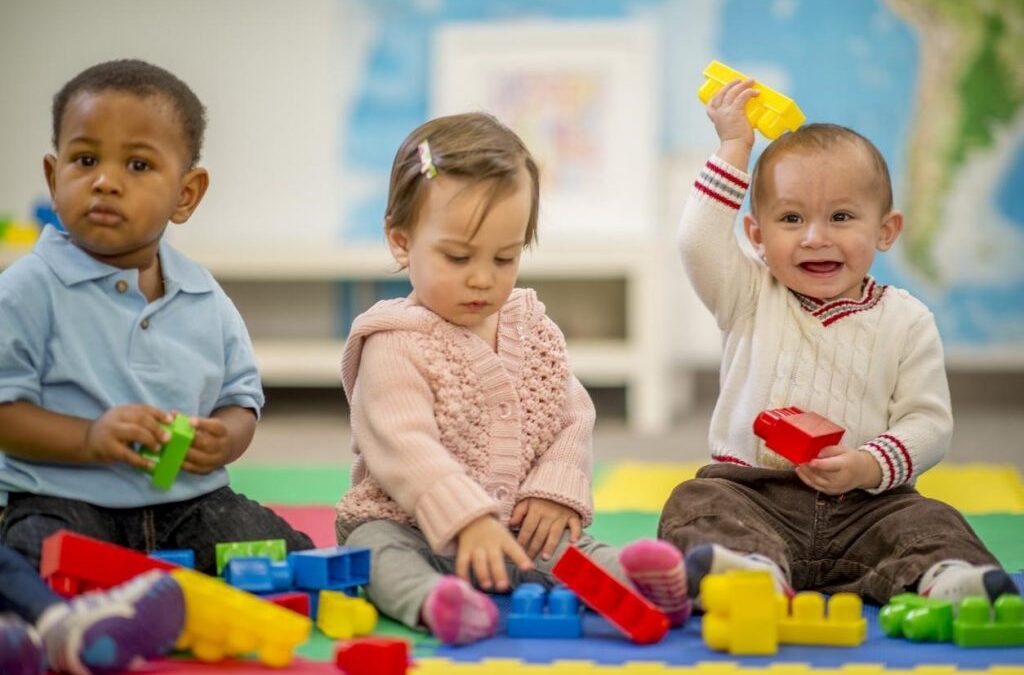Physical activities help your child master the ability to control their bodies as the areas of the brain that control movement develop. This, along with the building of strong muscles, helps preschoolers perform physical tasks throughout their daily routines. Physical development is broken down into two categories, fine motor and gross motor development.
FINE MOTOR DEVELOPMENT
We rely on the small muscles in our hands, fingers, and wrists to be able to perform seemingly simple tasks each day. We use fine motor skills when writing, buttoning or zippering a coat, turning pages in a book, and cutting with scissors among other things. Young children are just beginning to develop these skills, so they need a lot of practice in order to master them. By the time a child reaches the preschool years they should be able to make small snips in paper, build block towers, copy simple lines and circles, and manipulate playdough.
In order for a child to have fine motor control they need coordination and muscle strength. They need a lot of opportunities for practice to build these skills. There are a lot of fun, engaging activities that you can provide for your preschooler to support their fine motor development. Here are some examples.
- Use scissors to cut grass
- Manipulate playdough or clay
- Draw
- Paint
- Use hole punchers
- Make bead necklaces
- Cut out shapes
- Make collages
- Fold clothing
- Build with wooden blocks
GROSS MOTOR DEVELOPMENT
Gross motor skills are those that require the use of the entire body, which you do by using your large muscles. We use gross motor skills when standing, walking, jogging, and jumping. Gross motor skills also include skills that require eye-hand coordination, like riding a bike or throwing and catching a ball. Having strong gross motor skills is important for preschoolers to remain active and healthy. It also gives them the confidence to try more complex motor skills such as those skills needed for team sports.
By the time your preschooler is 3-years-old they should be able to balance on one foot, catch a large ball, jump forward, and ride a tricycle. It is recommended that children get at least one hour of physical activity each day. This can be a combination of structured and unstructured active play time. The more opportunities a child has to practice gross motor skills the stronger they will become. Here is a list of fun ways to practice gross motor skills with your preschooler.
- Play catch
- Go for a hike
- Use hula-hoops
- Play tag
- Jump rope
- Go swimming
- Ride bikes
- Dance
- Play on the swings
- Create an obstacle course
Strong physical development will set your preschooler up for a lifelong healthy lifestyle. Support your preschooler in their fine and gross motor development through both structured and unstructured play experiences that focus on physical development.

